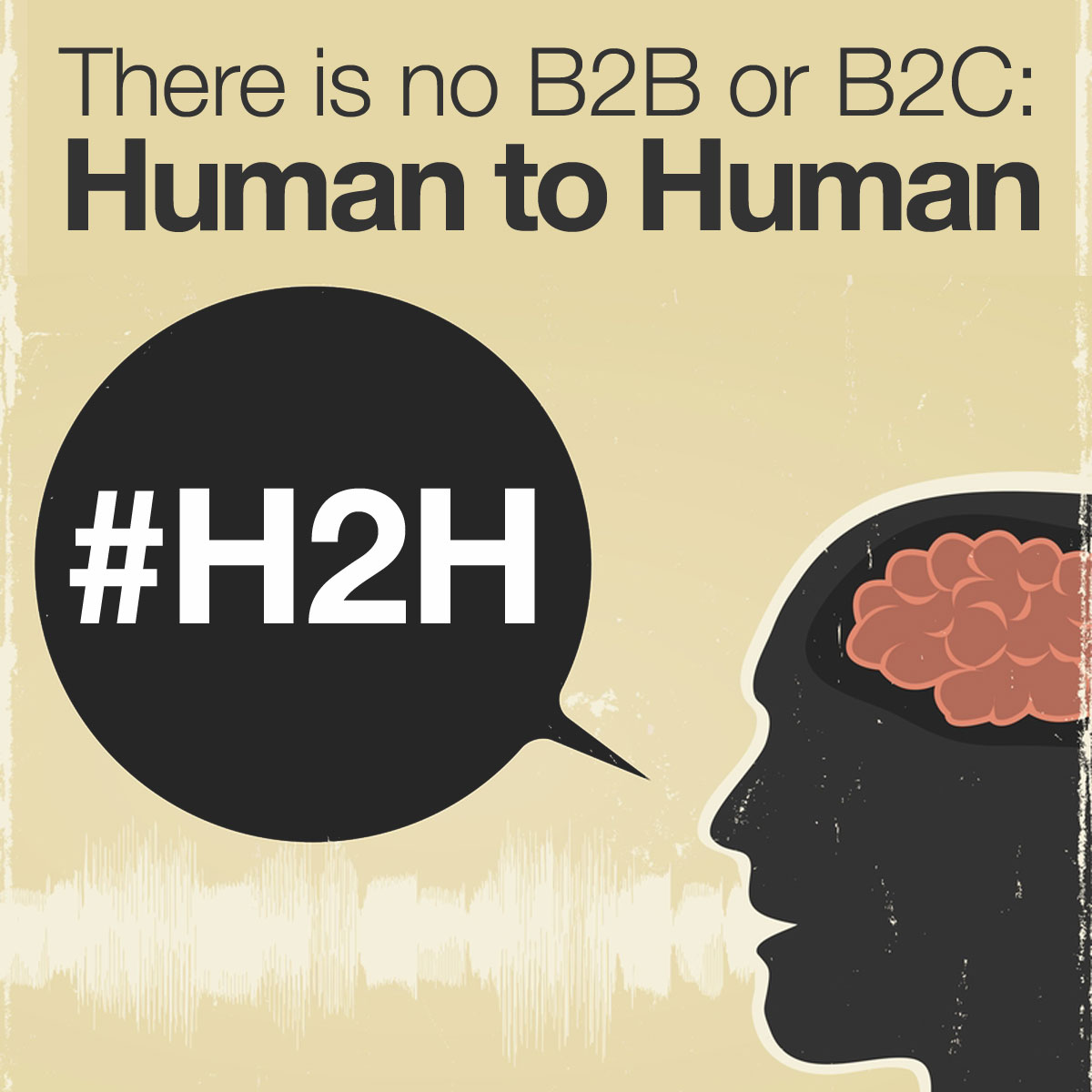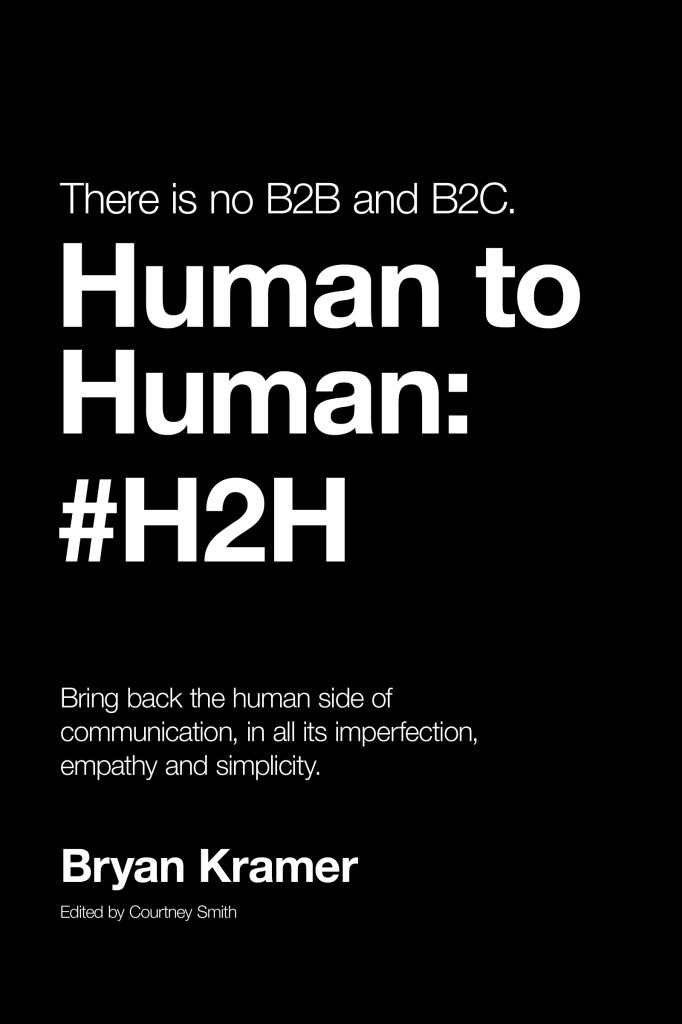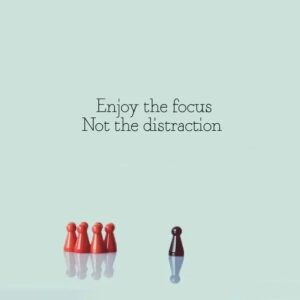Guest post by Bryan Kramer, author of the new ebook, “There is no B2B or B2C: Human to Human” and CEO of PureMatter
Marketing has become so complex, in segmenting audiences into “B2B” (business to business) and “B2C” (business to consumer). Being here in Silicon Valley, surrounded by titans of technology like Google, Facebook, Cisco, Twitter, LinkedIn and eBay to name a few, I’ve observed a downhill slope of complexity in marketing communication. This, plus the rise of social, digital and mobile channels, have created an atmosphere of anonymity, and the entire marketing ecosystem felt like a very cold, distant and impersonal place.
I fear that the social/digital/mobile world has created an angry mob of anonymous reactors who take short form communication literally. Until we learn to be mindful of what and how we share – what I call our “social body language” – and exercise our human empathy toward the mistakes and failures of strangers and the people we know, the online world of communication will remain somewhat of the “Wild West.”
That’s where “H2H” came from; we’ve been saying it in our agency, PureMatter, for over a decade. It’s also lived in many forms from many people, most popularly with P2P (person to person or people to people). Doc Searls (Cluetrain Manifesto + VRM), Chris Heuer, Christopher Carfi, Brian Solis and many others have been talking about how the dawn of a more social web, i.e. forums, discussion boards, and pre- Web 2.0 online communities, would eventually equalize the media landscape and give a voice and brand to customers while introducing the need for a human persona in business. As Brian says of P2P, “people are now brands and brands are now people.” And, most recently, Humanize by Jamie Notter and Maddie Grant, shared the benefits of people-focused businesses and how to lead the shift from the inside out.
This evolution has been guiding our society back into one that requires a more personal approach. It is time for a reminder about our humanity.
Speaking Human
Consumers are confused. Why can’t we make it simple for people to understand what we’re selling, so they can more easily share their experiences and the value they felt with others? More importantly, why is it that what we’re marketing most often does not align to actual consumer experiences? I don’t care what language you speak, who your brand is or what message you’re trying to send, we all need to speak more human. Too often we complicate what we’re trying to say. Ironically, as our world becomes more customer-owned and socially enabled, we continue to see complicated, redundant, over-technical, and over-thought mass messages getting pushed out – and lost – in the ether. Is it really getting harder to stand out, with so much data and information out there… or is the answer just to clearly say what you mean, in understandable human words?
A Human Approach: Social Sensory Marketing
Humans are social creatures; this is something we all know and understand. I had the pleasure of interviewing Scott Hebner, VP of Social Business at IBM, and friend Kare Anderson, author, speaker, columnist and coach, about how human behavior fits into the context of social marketing. Given that humans consume socially, I wondered where social marketing is headed as it continues to mature. Both Scott and Kare explained in their own ways that the future of social marketing involves “human sensory building”, and how it will become necessary to intertwine this approach into the marketing experience at each stage of the customer lifecycle. When we are able to weave directly relatable human experiences into social situations, it changes how we share and consume information forever. Human Sensory Building means connecting marketing to our most basic human sensory system. The more you can map what you’re communicating to these senses, the deeper and more meaningful your connections will be.
Customers are Fickle Humans
Customers, as humans, are fickle and are so empowered today that they expect extraordinary, over-the-top experiences that rock their world. Nothing less will do. Gone are the days where feedback was kept quiet and experiences were collected around a review form. Today, your customer’s comments are transparent to your competitors, making it easier for them to publicly see your pain points. Comparisons are easier to make and product switching happens faster than ever. Customers are ready to move on unless they have one thing – an undying relationship with a person or people at your brand who made them feel uniquely special.
Becoming Better Storytellers
Between the convergence of social, mobile and digital technologies, the way we have learned as humans to communicate with each other has changed forever. Texting has enabled us to eliminate face to face, or at least mouth to ear, communications in short bursts. Character limits, like on Twitter, force us to be more succinct about the words we share with the public. Over 90% of human communication is conveyed through visual body language cues. So what happens, when technology leaves us with just under the remaining 10% of verbal non-visual communication, is a floodgate of communication without context. This is a huge problem that’s rewiring our human brains, in my opinion. Humans require context to understand concepts. Without boundaries, short bursts of communication, coupled with a faster-paced, noisy society and shorter attention spans is affecting how we, as humans, tell stories.
We need to become better storytellers. A commonality between humans is our emotions; we can’t help crying when others cry, laughing when others laugh. You can’t expect anyone to connect with your content, message, brand, values, if you don’t yourself. It’s that simple. Storytelling is a great way to communicate how you feel, or how you want your audience to feel. A story helps us understand how things fit into our individual experiences and gives us context to make decisions. Stories add the color, personality and relevance about what you’re trying to sell.
Technology and unsexy products will never go away and need to be sold, but shiny pieces of metal on their own will never be as interesting as the human interpretation of why they exist. 52% of consumers stop following a business’ page because the content is boring and repetitive (source: SMI). So make your marketing interesting. Create a mood through imagery. Speak at your audience’s level. Be smart and clever when you can. Tell me, don’t sell me.
These topics and many more are discussed and explored in Bryan’s recently released book: Human to Human #H2H, available on iTunes and Amazon







Not much humanity in that cover. Was it designed by the same guy who did Spinal Tap’s “Smell The Glove” album?
Interesting article. A bit of a disconnect between the first line of the title and what is said here – I presume there is more in the book.
The B2 is wrong whether followed by a B or a C. We no longer live in the broadcast age. Humans form multiple fluid and overlapping communities and take their cues from the people they look up to in those communities. They may ask you to be a part of one of their communities – for the few moments it takes to make a purchase, or on a long term basis, if it reflects well on them.
The difference between B2B and B2C is in the nature of those communities.
In B2C they are friends, acquaintances and family. If your 10 year old daughter says that shirt isn’t cool, you won’t buy it, however good the story the manufacturer or retailer spins. The things you drink, the clothes you wear, the technology you carry and the car you drive are all badges of the communities you see yourself in. But usually the decision process is subliminal – you mirror the behaviour of those you look up to and information filters in (“Samsung is good”, “Apples aren’t cool anymore” etc.) before you make what you believe to be a spontaneous decision. The story-telling has to be multiple – reach is vital as repetition makes it stick.
In B2B the decision process is more obvious, though no more logical. Not only must you be convinced, but you need a portable story so you can convince others. You need to have answers for the questions others ask – often not relating to a product but to the change dynamic of the organisation (will I lose my job, have to move desk, have new tasks added to my worklist, have to work with John, answer to someone else etc.). There is a complex snakes and ladders interplay of status and hierarchy – get the decision through and you move up, but if it goes wrong you lose. And there must be an audit trail to prove the decision was “rational”, had ROI and that things like implementation were worked through (even if they are just guesses).
As a company a lot of this is still body language. If an idea is introduced or supported by someone your colleagues respect it is more likely to be taken seriously than if it comes from an office junior. If you pick a fight with the silverback he has the skills to kill the idea, regardless of its value. There is a need to build consensus, isolate opponents and bring key people onside. The story makes a big difference. It creates a rallying call – an aspiration which allies itself with the direction the company wishes to go.
It is managing that change dynamic in the company which marks the difference between BwithB and BwithC. The bigger the decision, the more complex the change dynamic – B2B capital projects is different from selling stationery. But I agree with your article – understanding and influencing the humans involved is the key to success.
All solid points. As most of us know, this sea change only started a few years ago, so many organizations are still trying to adjust and develop the required change in processes to meet the needs of today’s consumer. However, empathy should not solely be the responsibility of the brand. As customers, we’re rapidly losing any empathy we have to brands. Even when face-to-face with an established relationship, the “me first” or “me above all” phenomenon is rapidly spreading.
I wrote a post just the other day about Bryan’s book (which I haven’t finished reading yet), but we seem to always leave out the other party in the conversation… the customer. When is the customer wrong?
So many are focused on telling stories about the brand or the products and how it will change the consumers life. Promises are made and expectations are set. It’s critical to find the balance and help consumers not only receive and understand the story, but believe it through our actions. We must move from Storytelling to Story-believing and that is an aspect of the relationship that brands have yet to fully grasp.
If you’re interested in my post, you can find it here – http://www.greenmatterthoughts.com/consumerism/human-to-human-double-standard
Community has to be a legitimate factor in every business to get past this hurdle of impersonal marketing. Whether its users or consumers, listening to and planning with your community in mind will help brands hold on to the human element.
This line . . .
“Humans require context to understand concepts.”
. . . . jumped out at me.
One of my primary rules of communication that I’ve fallen in love with is, “The rule of communication is to NOT be misunderstood.”
And a lack of context opens the door wide for misunderstanding.
This is why the premise of speaking to all four learning styles is so crucial when communicating with platforms where you aren’t directly in front of the person and are able to adapt your presentation to meet the learning style they favor.
When we market, i.e. continually educate people on why it is a great idea to give us their attention and money, we often do so from the way we prefer to learn.
· Do you learn best by asking Why and engaging in discussion seeking out reasons?
· Do you learn best through theory and principles?
· Do you learn best through by having processes, procedures and recipes to follow?
· Or do you learn through best by hands on trial and error implementation?
Whichever of these you favor, will be what you lead with, to the exclusion of 75% of the market. But if you speak to each learning style, not only do engage more of the market, but you strengthen the argument you’re making.
Here’s a very quick break down of how to address each learning style in order to craft complete concepts . . .
1. Why?
Why do I need to learn this? You need to get them excited to learn. Tell them what’s in it for them if they learn what you’re about to teach. You also need to tell them what they’re going to avoid if they learn it.
You need to use both pain AND pleasure.
Example: If you use what I’m about to teach you, you will lose weight. If you don’t use what I’m about to teach you, you will not lose weight and if fact you will probably gain more.
For the “Why” learning style, they can’t hear you until you’ve connected up what you’re about to teach them with the benefit or the result that they want. So always explain, the outcome, the result, the benefit that the person about to embark on this journey will get.
And also explain the pain and the frustration, the fear that they’re going to avoid if they learn what you’re teaching them.
2. What?
These are the theoretical types. They want to know what they’re going to learn. They want the concept and the theory.
This type of learner loves to know the history, the science behind what you’re teaching. If you can talk about a study that was done about the topic you’re discussing, they’ll love it.
You can also explain the history of how you figured out exactly how the system works. If you can, show them a map of how all the pieces fit together. You want to zoom out and give them a conceptual view.
The example for a weight loss product would be explaining how the body puts fat on and how it sheds fat; the science behind this process.
3. How?
These people need a recipe. They want specific action steps in order to learn.
Each of the action steps involved… 1, 2, 3…
4. What If?
What if I go out and do it? What will happen? This one is where the person favors seeing themselves using it and the result that comes from using it and that’s how they learn. And they ultimately come to understand it only after they’ve used it in the real world.
Everyone needs to do this and so you want to be steering people towards this action.
So at the end of your content you would summarize and say, “Here’s what to go and do, right now to get started! As you’re taking action, here’s what to watch for to determine if it’s working, here’s what to watch for that tells you it’s not working.”
If you cover all these bases with a point you’re trying to make whether in a promotion or with a piece of content, your audience will love you for doing this. And when you speak to each of these learning styles with the stories you tell, you’ll be influencing at a very high level.
Thank you Brian for posting Bryan’s awesome content here as it reminded me of lessons I can’t be reminded too often of as it’s so easy to be selfish with communication. 🙂
I like your nice application of 4MAT Learning in reply to this article. Understanding and respecting the audience (individual consumer to corporate entity) and their needs (through needs based selling) usually leads to good messaging and ultimately the reason for marketing – making a sale.
Yes! Whether you’re at work or at home you’re still human and the people who are dealing with you are too. The personal touch makes a difference wherever you’re operating. Thanks for reminding us of this.”H2H” great encapsulation of the idea.
Thank you for the great article. No matter what great advertising that gets me interested, the biggest differentiator today is how I am treated face-to-face. It can be as simple as what grocery store to shop at for friendly service or if the mechanics shop is unprofessional and treats me like I am unimportant. Friendly, respectful communication with a good bit of knowledge of the product/service is what I am looking for!
Thanks for the great post. One of my most frequent lamentations when it comes to digital communications is that the “human” part of the interaction is missing. If there is not already, there should be a site dedicated to examples of people behaving badly online. The anonymity of the online experience has elevated the online society even past mob-mentality, towards something entirely ugly, inhuman, and inhumane. Individuals and organizations have mastered digital communication, now what’s needed is the H2H, as discussed in your post.
For PR and marketing professionals (amongst others), the crux of this will be to find ways to achieve our goals/objectives while treating others as we would like to be treated, being honest-to-god authentic, and treating an avatar like you would a person on the street (or maybe even better depending on your personal skills :))
This reminds me of that great “Human Moment” article. Though it’s dated, the article talks about how the increase in non-face-to-face interactions has led to a constant state of anxiety. So many benefits from a true “Human Moment” (which requires physical presence, emotional & intellectual attention) get lost in the digital age. It’s important to remember how we need to bring a human aspect when marketing.